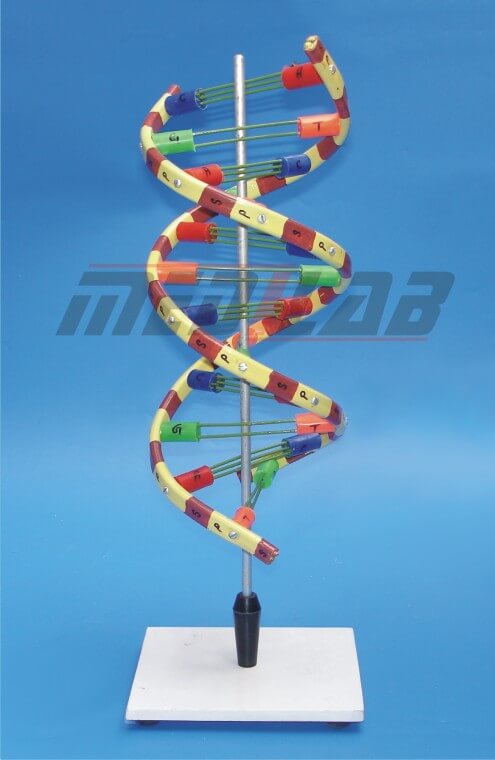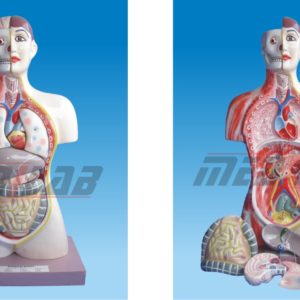Description
DNA Helical Type Model is an essential educational tool used in biology, genetics, and medical studies to demonstrate the structure and function of DNA. These models provide a 3D representation of the double-helix structure, helping students and researchers visualize how DNA stores genetic information and replicates.
Features of a DNA Helical Model
- Double-Helix Structure – Shows the iconic twisted ladder shape of DNA.
- Color-Coded Components – Different colors for nitrogenous bases, phosphate, and sugar molecules.
- Base Pair Representation – Includes Adenine (A), Thymine (T), Guanine (G), and Cytosine (C) pairs.
- Flexible or Fixed Models – Some models allow rotation to demonstrate DNA unwinding.
- Durable Material – Made of PVC, plastic, or metal for long-term use.
- Removable Parts – Advanced models have detachable segments to study molecular interactions.
- Life-Size & Enlarged Versions – Available in different sizes for classroom or lab demonstrations.
Types of DNA Helical Models
- Basic DNA Helix Model – Displays the primary twisted ladder structure.
- 3D Rotating DNA Model – Allows rotation to show DNA replication and transcription.
- Magnetic DNA Model – Interactive, with detachable components for hands-on learning.
- Fluorescent or Transparent DNA Model – Enhances visualization with lighting effects.
- Molecular DNA Model – Provides an in-depth view of atomic-level interactions.







